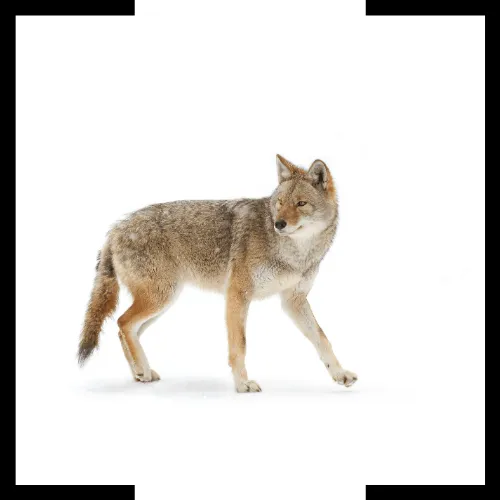Coyote Removal & Exclusion
For many of us, our first experience with a coyote usually ended poorly for the canine. Saturday morning cartoons were filled with an anvil to the head or an exploding rocket, and Wile E. Coyote walked away defeated. This depiction has left a less than an accurate picture in many of our minds. They look similar to our family pets from a distance but make no mistake; your pet could look like a tasty meal for them. Since the 1950s, populations across the country have been growing.
While the Missouri Department of Conservation does not estimate how many coyotes there are in the state, they do say the numbers are increasing. They are highly adaptable and have been reported in big cities like St Louis, where wildlife experts estimate the population has doubled from 2020 to 2021. The issue has gotten so bad that hunters and trappers can use night-vision scopes to reduce the population, and they can be hunted 365 days a year, and now 24 hours a day, except for daylight hours from April 1st to 17th, with no limits.

Even though they are nocturnal creatures, they do also hunt during the day. They are social animals, and hunting in packs can occur, making them even more dangerous. The mainstay of their diet is deer, but they are opportunistic hunters, and mice, rabbits, and other small mammals make a quick meal. Free-roaming livestock is also targeted when the opportunity presents itself. The chances of a person being attacked are rare, and after one was reported in the mid-1990s, the next one wasn’t reported until 2020, and that animal had rabies.
This brings us to the greater danger they pose to our pets: pathogens, Lyme Disease, Leptospirosis, canine distemper, and canine parvo. They can also host heartworm and be infected with mange.
Don’t be fooled by their dog-like appearance. If you see them roaming your property or signs of them, most notably their feces and tracks, contact Advanced Wildlife. We are the most trusted wildlife removal company in Sullivan and the surrounding areas. We take great pride in what we do, and our mission is to protect you from the potential danger coyotes pose.
